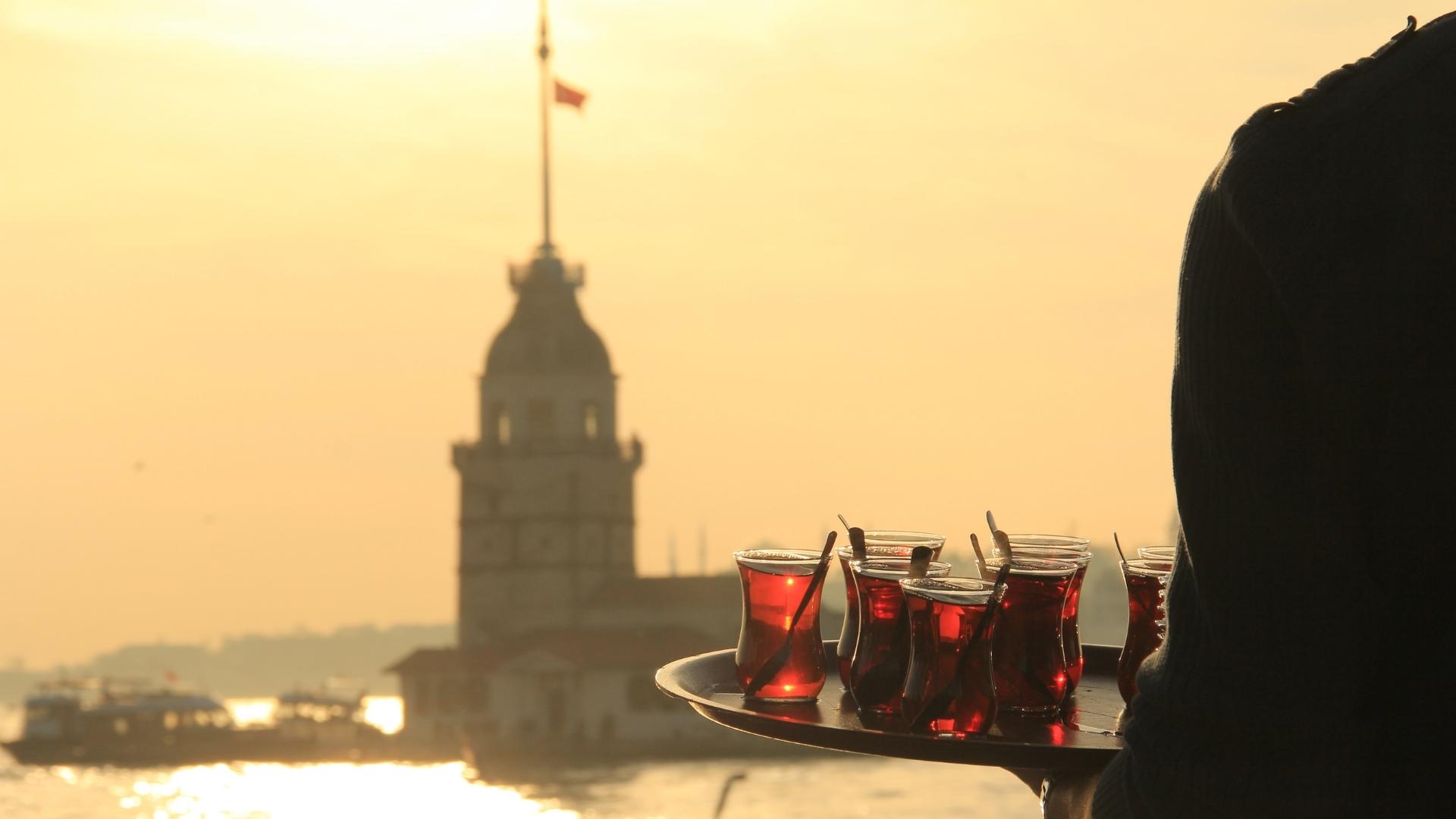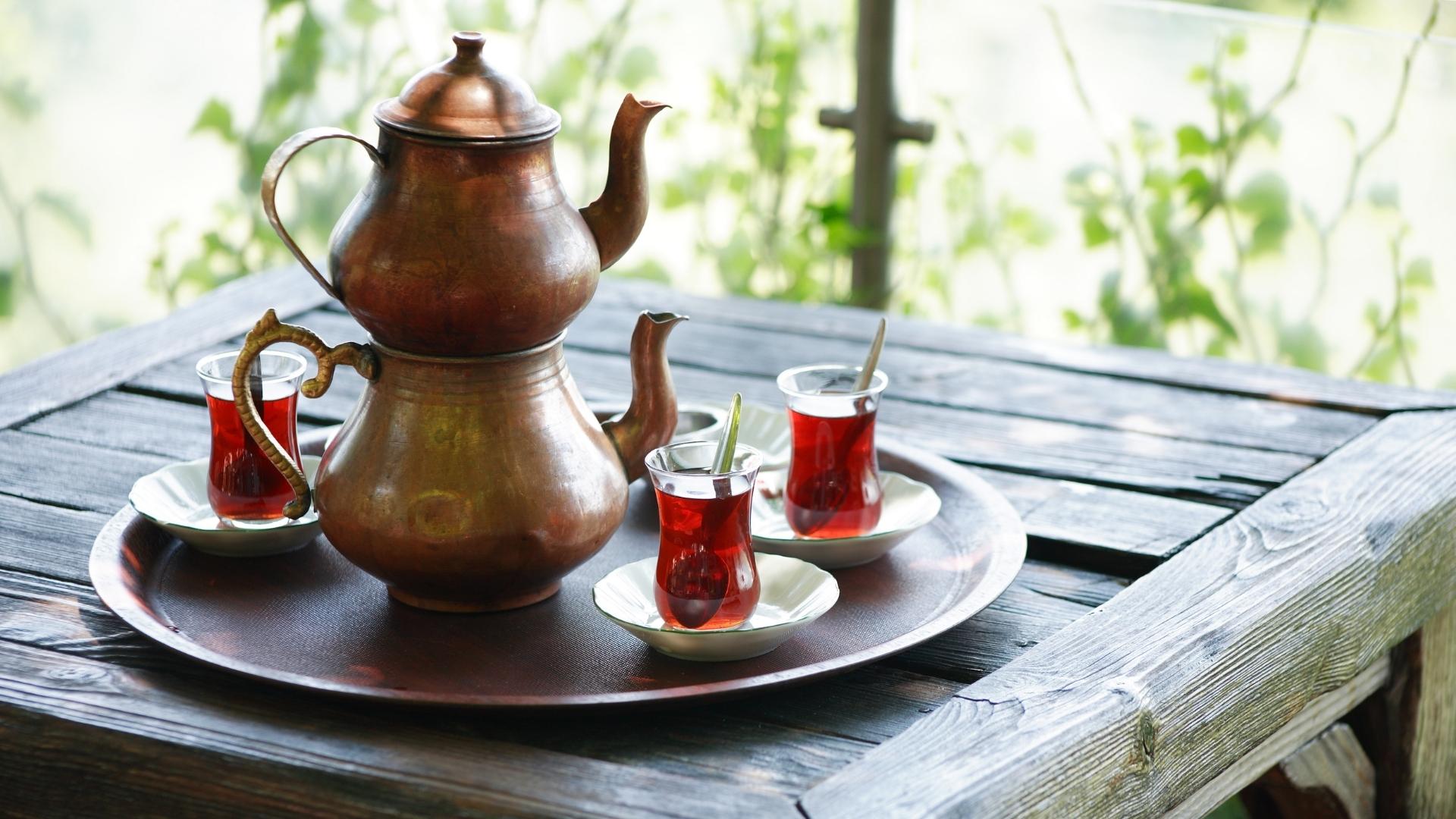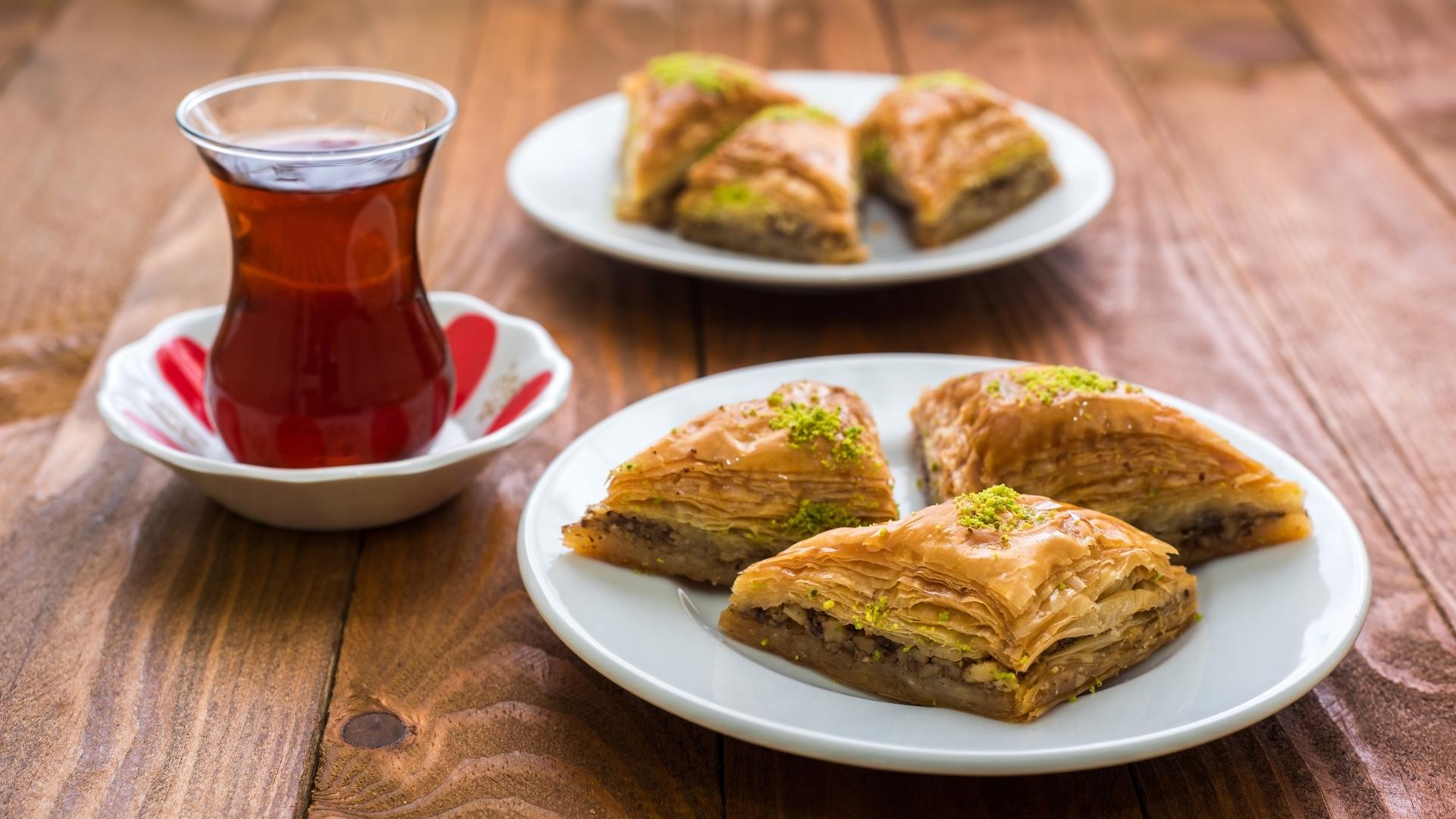Turkish tea is one of the drinks that can look back on a long tradition. Along with Turkish coffee, this drink is one of the most popular in the country. But where does this delicious hot drink come from? And how do you make Turkish tea?
We are pretty sure you have already heard about this treasure in Turkish cuisine. It is one of the most well-known specialities of Turkey, together with Turkish coffee and the famous dessert called baklava.
In the following article, you will learn a lot about how Turkish tea found its way to the beautiful country in the Orient and much more!

What is Turkish Tea?
Turkish tea, known in the Turkish language as “çay”, is a bitter, slightly sweet black tea. Traditionally, it is prepared in a so-called Çaydanlık, a two-piece tea pot consisting of different sized teapots. Basically, this resembles the samovar from Russia, which works in the same way as its Turkish variant.
In the larger pot is the water, in the smaller one placed above the other, you will find the tea concentrate, consisting of some water and tea leaves.
For tea, a so-called Rize tea is used. This is a unique form of black tea, basically drunk without milk. This distinguishes it from other types of tea, which are pretty popular in the Asian region or in England.
The tea is grown mainly in the eastern part of the Black Sea coast. There is quite a mild climate; for this reason, the soil in this area is particularly fertile.
Turkish tea differs from other black teas mainly in its size. The leaves are not cut too finely; in this way, the tea does not lose its aroma. If you want to buy real tea from Turkey, it is best to look for it in the supermarket and make sure that it says “Rize” on the package.
This is the name of the region on the Black Sea where this tea is grown. State owned Çaykur has a great variety of Turkish teas available in the grocery stores.

Variations of Turkish Tea
Besides the classic black tea, you can also drink teas in Turkey prepared from herbs or fruits. Strictly speaking, this is not tea at all but a tea preparation. This is because tea leaves are not used in the preparation, but the way remains the same.
Especially for people who find black tea too strong, these alternative teas are the preferred choice. Apple, rosehip, linden and sage teas are especially popular varieties, both among locals and tourists. Furthermore, these teas do not contain caffeine; for this reason, even children can enjoy this drink without hesitation.
Where Does Turkish Tea Come From?
The Turkish term “çay” alone tells you where this particular tea originated. In the Asian region, tea is called “Cha” or “Chai”. Accordingly, the traces of Turkish tea can be traced back to countries like India.
It was mainly traders who brought tea from the Far East to Turkey via the Silk Road. There, this drink became so popular that the Turks also wanted to buy more and more tea. However, traders with masses of tea did not constantly pass by to meet the high demand. In addition, the tea transported over this long distance was also not too cheap.
Accordingly, the Ottoman Empire of that time tried to grow tea itself. The first attempts failed because the tea plants did not bear fruit, and a suitable climate was unfortunately not given in many parts of the country.
Today’s tea is nevertheless cultivated in Turkey; the old Ottomans have to owe, above all, Russia. They had been growing their own tea for many years in Georgia, which at that time still belonged to the Russian Empire.
The climate was similar to that on the Black Sea coast, so the Ottomans made another attempt. This one was a complete success, which is why the region to the east of the Black Sea coast is still the largest tea-growing area in the entire country.

Tea in Turkish Culture
Drinking tea together is considered a sign of hospitality in Turkey. For this reason, it is a tradition in Turkey that you, as a visitor, are offered a glass of tea after a meal together.
Correct, in Turkey, tea is drunk from glasses. And not, as in many other countries, from a mug. In this, Turkey differs from many other countries that also have a close relationship with tea.
In fact, tea has become so popular that it has even overthrown the equally popular Turkish coffee. Today, many Turks prefer tea to coffee for breakfast, even though it contains much less caffeine.
The reddish, slightly brown colour of the tea is typical. If you like your tea sweet, two cubes of sugar are added to the small tea glass. This is too much for the amount of tea because not all the sugar can dissolve in it. But this is not a waste of sugar because if you want another tea, exactly this residual sugar at the bottom will sweeten the next tea. In total, the two cubes of sugar are enough for about five tea infusions.
Of course, in a country as diverse and large as Turkey, there are differences in how it is prepared and enjoyed. In eastern Turkey, for example, glass is used with only one piece of sugar, and this has to be enough for four times the amount of infusions.
This piece of sugar is also not put into the glass. Instead, you put this under your tongue while drinking. You will hardly find this special form of tea drinking in western Turkey, but in the deep east of the country, it has a long tradition. This ritual is known as “Kıtlama Çay”.
Of course, you can also enjoy your Turkish tea outside the home. In Turkey, there are some tea drinking places called “Çay Bahçesi” in every city. Since there must be a large amount of tea available due to the high demand, there is a so-called “Semaver”. The tea waiter can refill your glass at any time.
We are sure that you have already made acquaintance with Turkish tea during one or another family holiday in Turkey. If not, it is high time to spend your next vacation in Turkey. Then you should not miss the chance to enjoy this delicious drink!
Oh, and don’t forget to try the delicious Turkish food!
